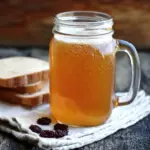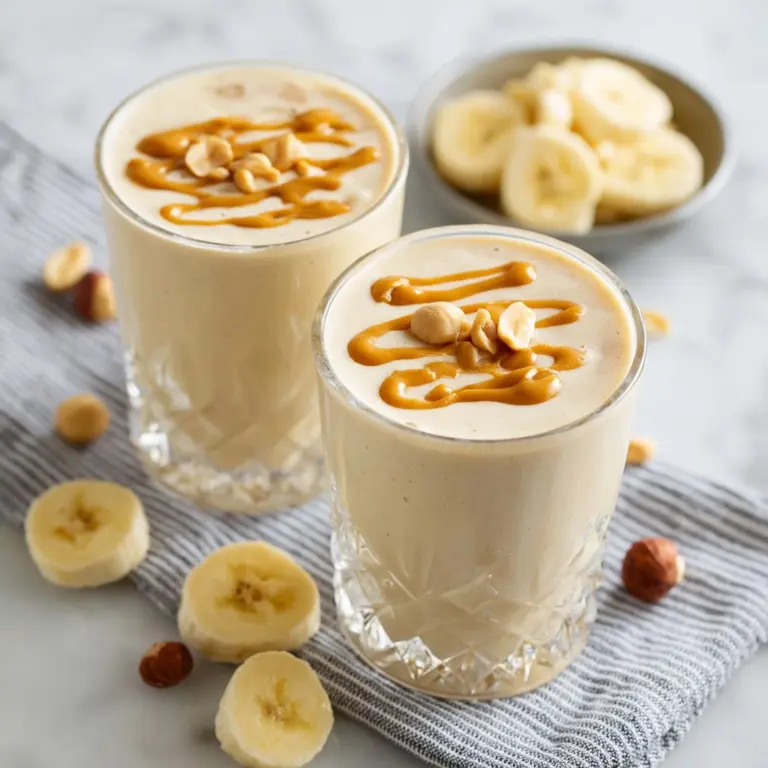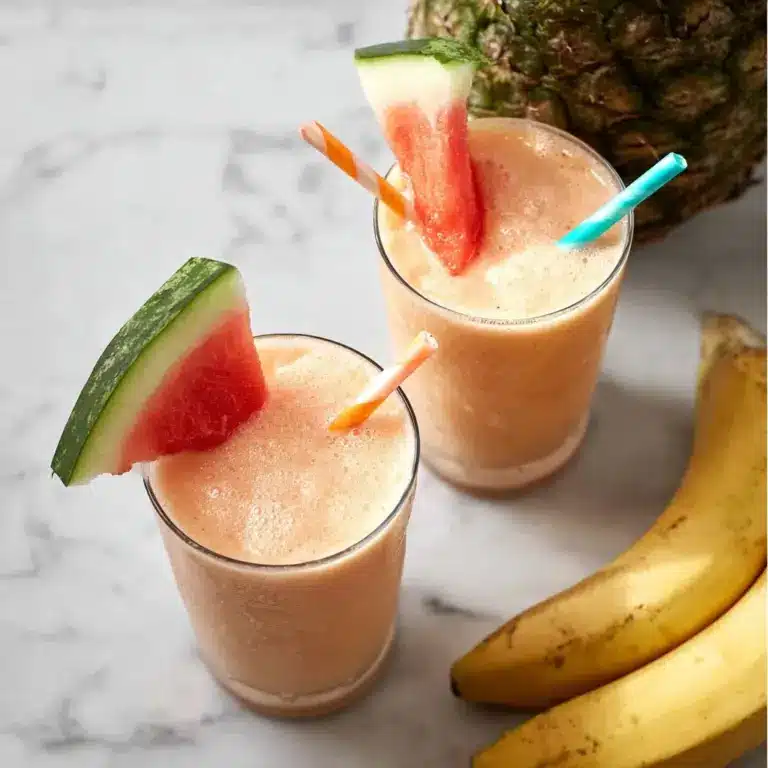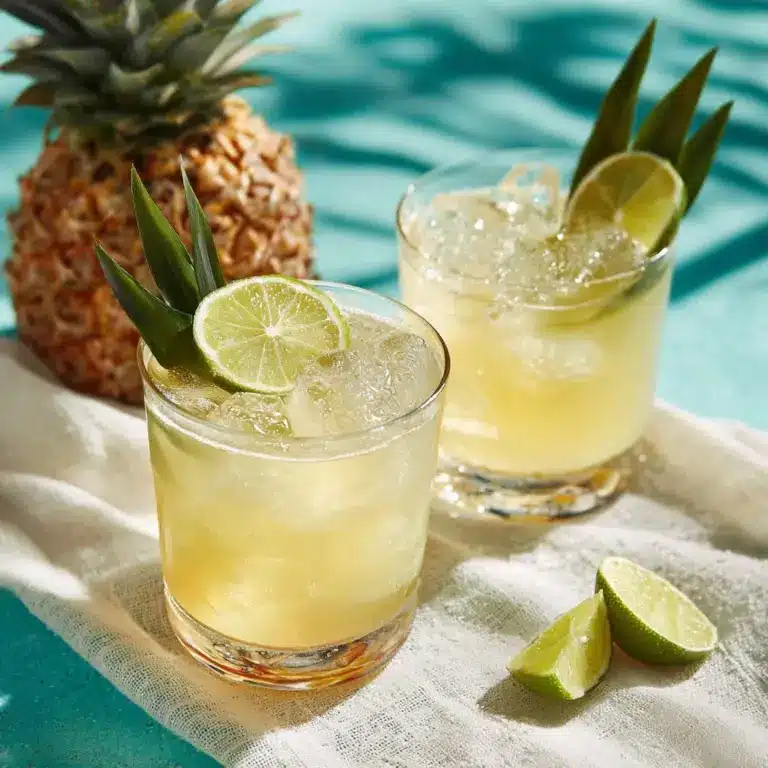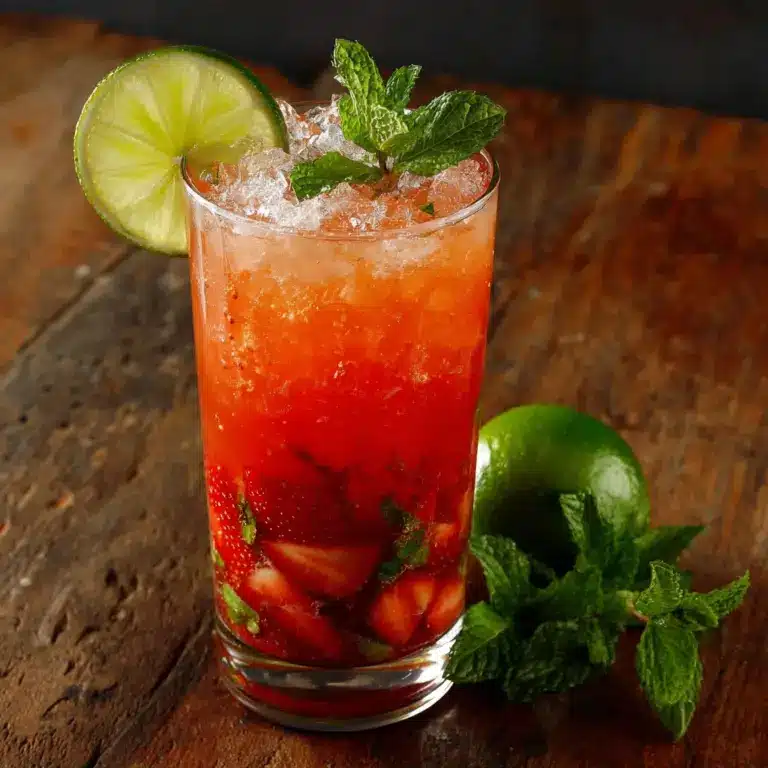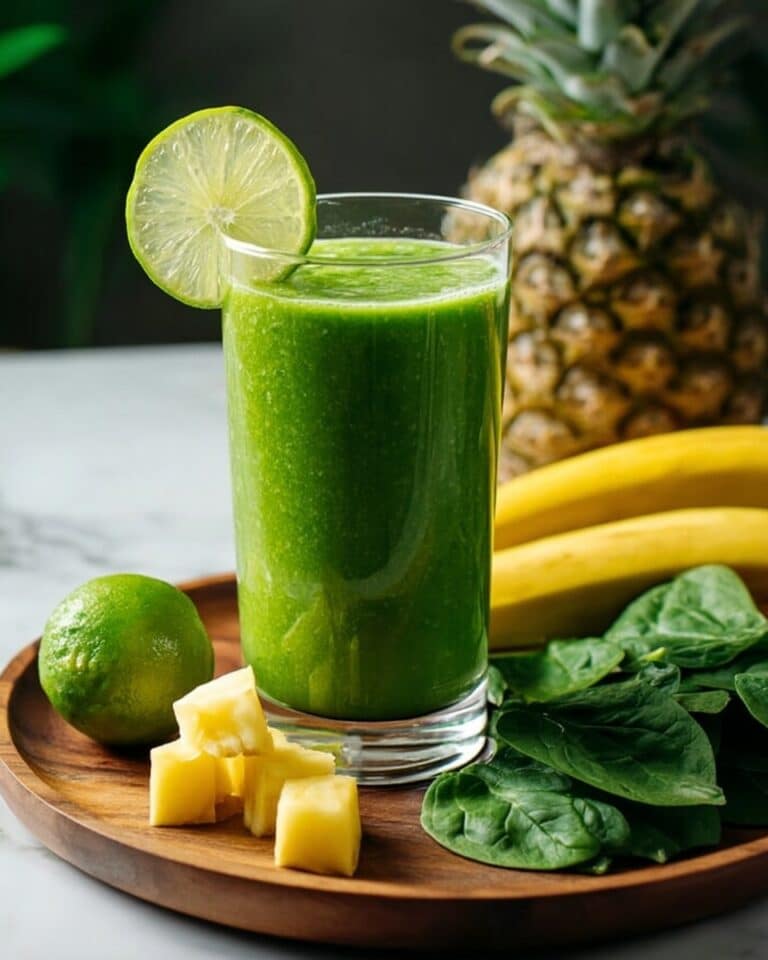Russian Kvas Recipe
There’s something utterly magical about a chilled glass of homemade kvas on a summer afternoon, the kind that transports you to a bustling Russian kitchen with every effervescent sip. This Russian Kvas Recipe brings a delightful tang, subtle sweetness, and malty depth, perfectly balancing refreshment with nostalgia. Whether you’re reliving a childhood memory or experiencing kvas for the first time, this simple yet satisfying beverage stands as a treasured staple, promising to surprise and delight with every batch you brew.
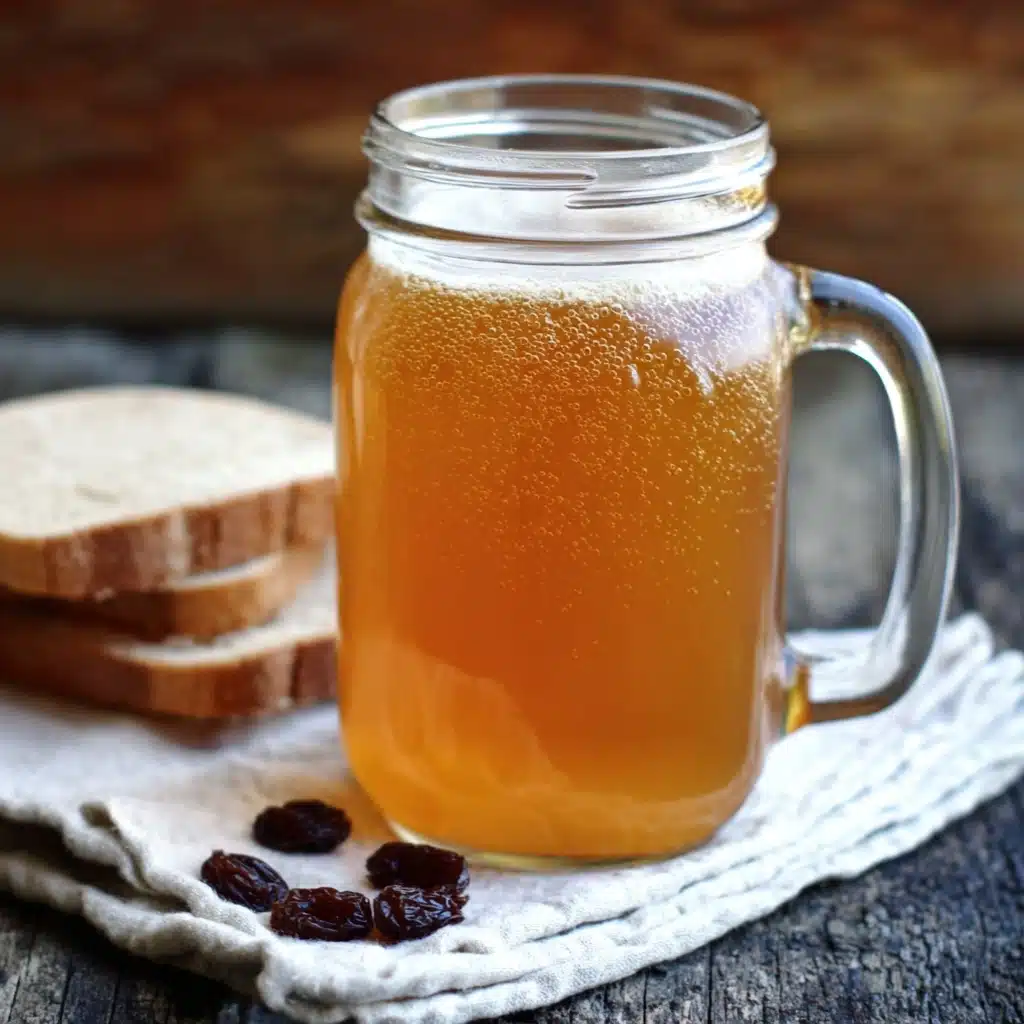
Ingredients You’ll Need
The heart of any Russian Kvas Recipe lies in humble, familiar ingredients that come together to create something truly extraordinary. Every element here plays an important role—nothing is superfluous, and each gives the kvas its unmistakable taste, color, or lively fizz.
- Warm Water: Acts as the foundation for your kvas, helping dissolve sugars and encouraging proper yeast activity.
- Kvas Concentrate: This shortcut adds authentic, robust kvas flavor in an instant, making the process much quicker and more reliable than traditional brewing.
- Sugar: Not only sweetens the beverage but also serves as food for the yeast, kick-starting fermentation and forming those tiny bubbles.
- Active Dry Yeast: Responsible for the signature fizz—the yeast eats the sugar and creates carbonation as a byproduct.
- Raisins: These act as natural fermentation boosters and add a hint of complexity to the flavor profile.
- Rye Bread: Toasted for a deep, malty, signature aroma and taste, rye bread is the soul of any true Russian kvas.
How to Make Russian Kvas Recipe
Step 1: Prepare the Base
Start by pouring all five liters of warm water into a huge bowl or a food-grade bucket—give yourself plenty of space for stirring. The warm water is vital because it helps dissolve the sugar completely and activates the yeast later on. There’s genuinely something satisfying about watching the sugar crystals disappear into the golden liquid as you prepare your kvas base.
Step 2: Blend in the Sweetness and Concentrate
Add 10 tablespoons of kvas concentrate along with the sugar, stirring patiently until the mixture is smooth and uniform. That gorgeous amber hue and signature tang you crave all start to take shape at this step. The aroma alone will immediately remind you that something special is brewing!
Step 3: Add Yeast and Raisins
Sprinkle in your active dry yeast and add the raisins. Don’t rush this! Be sure the yeast dissolves fully—it’s the secret to that perfect, natural carbonation. The raisins will float as fermentation works its magic, and they’ll signal when it’s ready later on.
Step 4: Toast the Rye Bread
Cut half a loaf of rye bread into one-inch squares. Toast them in the oven until they’re dark and wonderfully crisp, just on the verge of caramelization. This step is where the kvas gets its authentic malty backbone and deep color. The toastier, the better!
Step 5: Combine and Cover
Drop the crispy bread pieces into your base and cover the bowl tightly with a breathable cotton cloth. Secure it with a rubber band or string to keep it snug, but allow those precious fermentation bubbles to escape, rather than building up pressure.
Step 6: Let It Ferment
Find your warmest spot (85°F works wonders) and let the concoction sit undisturbed for 18 to 20 hours. The wait is totally worth it! The longer it ferments, the bolder and tangier your Russian Kvas Recipe will taste. You’ll notice a fragrant, yeasty aroma as fermentation progresses—it’s all part of the charm.
Step 7: Strain and Bottle
Remove the raisins and bread, then strain the liquid carefully through several layers of cheesecloth. This ensures a crystal-clear (but still richly tinted) kvas. Pour it into clean juice bottles, filling each about three-quarters full to allow for safe expansion. While the kvas is still a little warm, leave the bottle caps loosely fitted. Once fully chilled in the refrigerator, you can tighten the lids for sparkling results.
How to Serve Russian Kvas Recipe
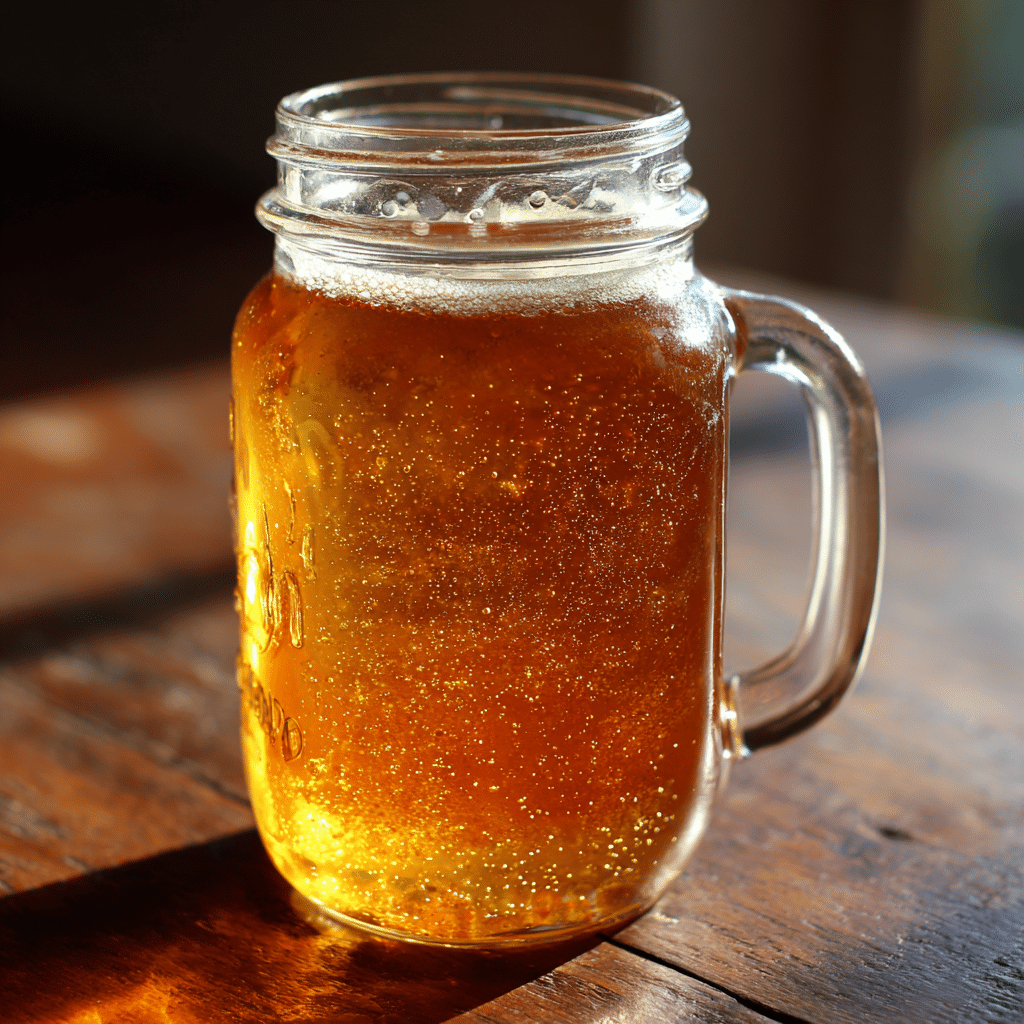
Garnishes
A classic Russian Kvas Recipe needs minimal embellishment, but a float of fresh mint leaves or a few ice cubes elevates it beautifully. Some even love to add a thin slice of lemon for a bright touch! Serve it in clear glasses to show off its beautiful caramel hue.
Side Dishes
Traditionally, kvas makes an excellent partner to hearty meals like borscht, smoked fish, or savory piroshki. Its effervescent tang helps cut through rich flavors, making every bite feel lighter and more balanced. Don’t be surprised if guests reach for a refill between forkfuls of their favorite Russian fare.
Creative Ways to Present
For special gatherings, decant your Russian Kvas Recipe into handsome glass pitchers, add sprigs of fresh herbs, or even edible flowers for a show-stopping centerpiece. In hot weather, freeze kvas into ice pops for a fun, nostalgic treat. You can also pour it over scoops of lemon sorbet for a grown-up float with a Slavic twist.
Make Ahead and Storage
Storing Leftovers
Leftover kvas keeps well in the fridge for up to five days, sealed tightly in bottles. In fact, a day or two of extra aging only improves the complexity and fizz. Just remember to keep the caps tightly closed to maintain its effervescence; otherwise, you’ll lose that signature sparkle.
Freezing
While freezing isn’t traditional, you can freeze Russian Kvas Recipe in airtight containers if needed. Pour into freezer-safe bottles, leaving some headspace—then simply thaw in the refrigerator before serving. Some of the carbonation may be lost, but the flavor remains true.
Reheating
Kvas is always best enjoyed cold, straight from the fridge or over ice. It isn’t intended for reheating; warming will flatten the fizz and dull its fresh, tangy profile. If you want to revive the sparkle after storing, simply swirl gently before pouring to redistribute natural bubbles.
FAQs
What is kvas concentrate and where can I find it?
Kvas concentrate is a thick syrup made from fermented rye and barley, packed with all the essential flavors for authentic kvas. It’s usually available at Eastern European groceries or online shops specializing in Russian foods.
Can I use different bread for my Russian Kvas Recipe?
Rye bread is classic for a reason, but brown or whole grain bread can be used for a slightly different flavor. Stick with hearty, dense loaves for best results—the flavor won’t be as rich with plain white bread.
Why do raisins go into the fermenting kvas?
Raisins help boost fermentation, act as a natural indicator (when they rise to the top, your kvas is usually ready), and offer a faint undertone of fruity sweetness that rounds out the flavor beautifully.
How do I know when my kvas is finished fermenting?
After 18-20 hours in a warm spot, you’ll see the raisins floating and notice bubbles forming. Taste a spoonful: If it has a pleasant tang and light fizz, your Russian Kvas Recipe is ready to be strained and chilled!
Is Russian kvas alcoholic?
Homemade kvas contains only a trace amount of alcohol from the fermentation—typically less than 1 percent. It’s safe for most people, but do check before serving children, those pregnant, or anyone abstaining from alcohol.
Final Thoughts
Making a batch of this Russian Kvas Recipe is like bottling sunshine and tradition together! Whether you love the gentle fizz, the nostalgic aroma of toasted bread, or just the thrill of homemade fermented drinks, I hope you find a new favorite in every glass. Give it a try—your taste buds (and your friends) will thank you!
PrintRussian Kvas Recipe
Learn how to make traditional Russian Kvas at home with this easy-to-follow recipe. This naturally fermented beverage is a refreshing and slightly tangy drink that’s perfect for hot summer days.
- Prep Time: 20 minutes
- Total Time: 18-20 hours
- Yield: 5 liters 1x
- Category: Beverage
- Method: Fermentation
- Cuisine: Russian
- Diet: Vegetarian
Ingredients
Base:
- 5 liters (5.28 quarts or 21 cups) warm water
- 10 tablespoons Kvas concentrate
- 1 ¾ cups sugar
Yeast and Raisins:
- ½ tablespoon active dry yeast
- 10 raisins
Toast the Bread:
- ½ loaf of rye bread, cut into 1-inch squares and toasted
Instructions
- Prepare the Base: Pour the warm water into a large bowl or bucket. Add Kvas concentrate and sugar. Stir until sugar is dissolved.
- Add Yeast and Raisins: Stir in yeast until fully dissolved. Add raisins for fermentation.
- Toast the Bread: Cut rye bread into squares and toast until crispy.
- Combine the Ingredients: Add toasted bread to the mixture. Cover with a cloth and secure.
- Ferment: Let sit in a warm location for 18-20 hours.
- Strain and Bottle: Remove raisins and bread. Strain through cheesecloth into bottles. Seal tightly.
Notes
- Adjust sugar to taste for desired sweetness.
- Experiment with different bread types for unique flavors.
Nutrition
- Serving Size: 1 cup (240ml)
- Calories: 110
- Sugar: 20g
- Sodium: 5mg
- Fat: 0g
- Saturated Fat: 0g
- Unsaturated Fat: 0g
- Trans Fat: 0g
- Carbohydrates: 25g
- Fiber: 0g
- Protein: 1g
- Cholesterol: 0mg
Keywords: Russian Kvas, Kvas recipe, fermented drink, traditional Russian beverage

